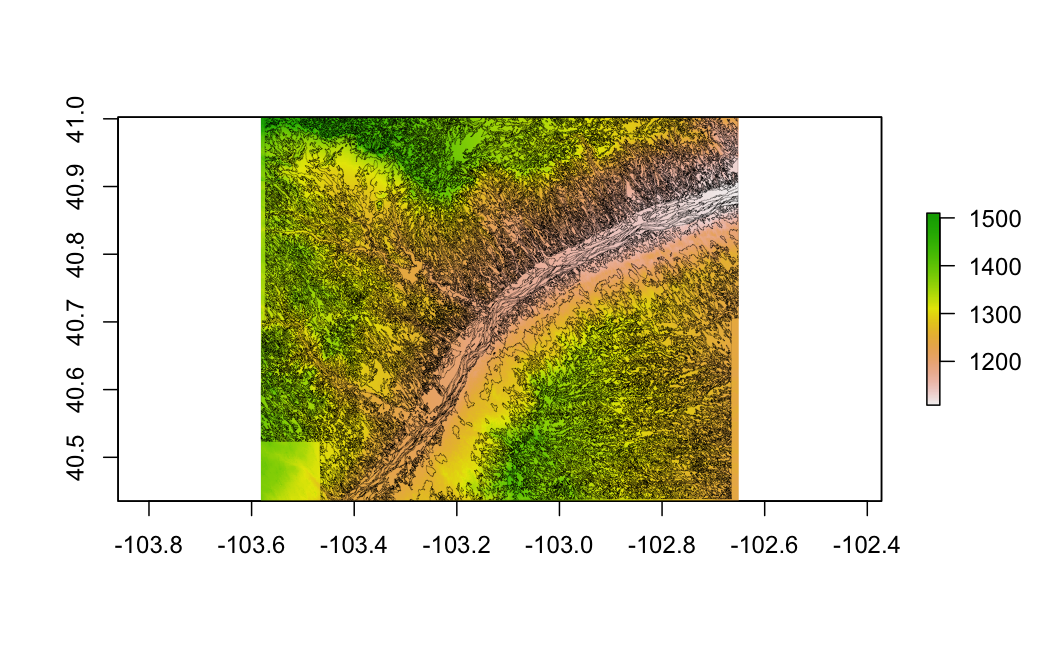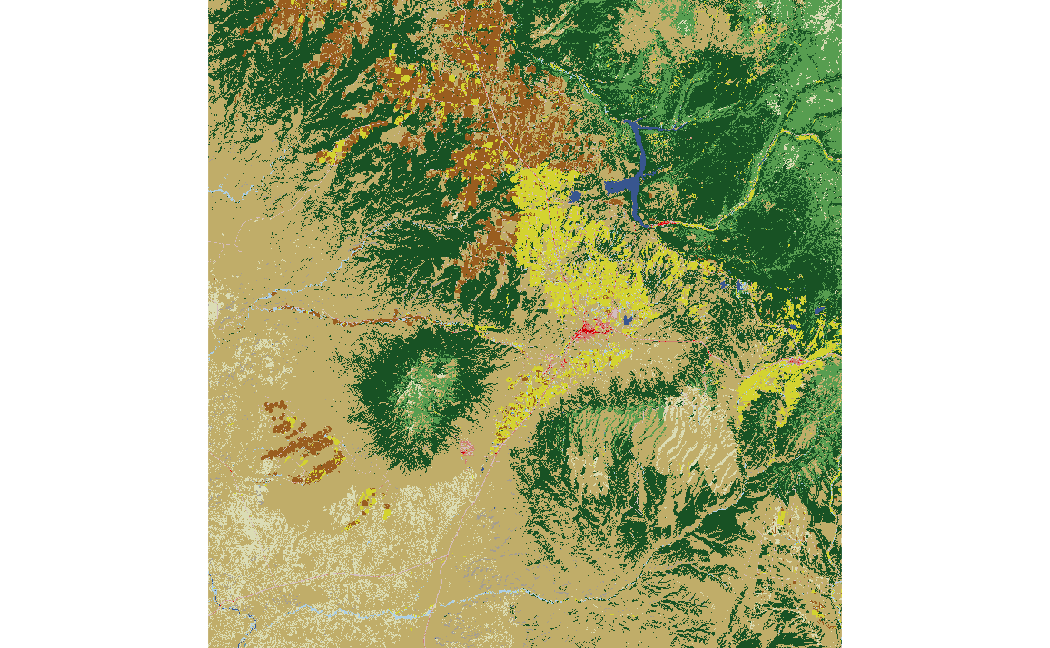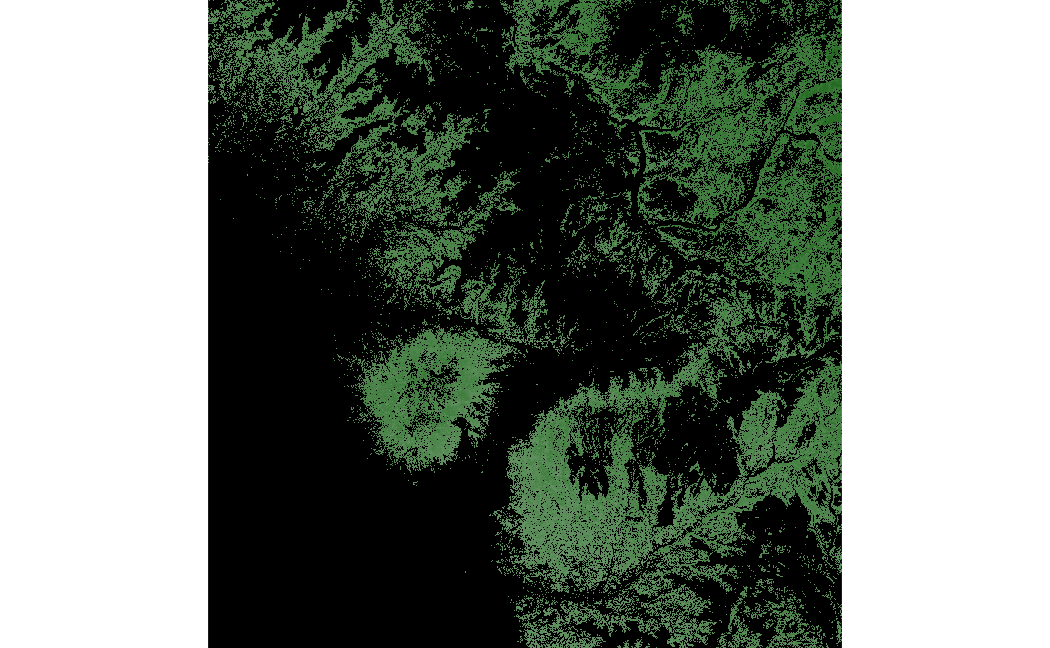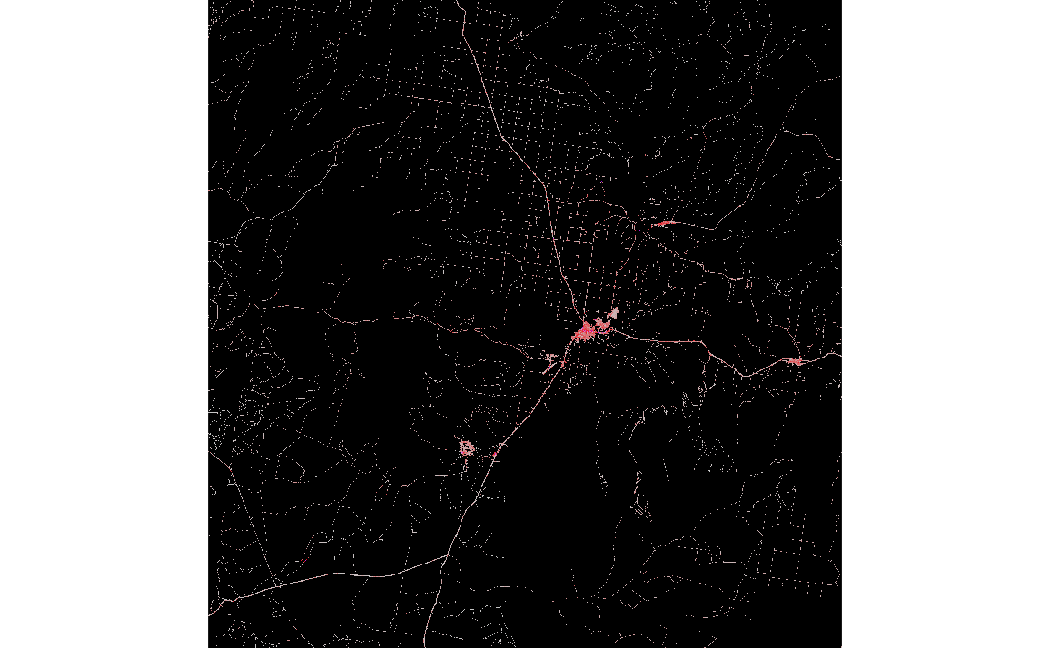
FedData is an R package implementing functions to automate downloading geospatial data available from several federated data sources (mainly sources maintained by the US Federal government).
FedData version 2.5 will be the final minor CRAN release of FedData 2. FedData 3 will be released in the coming months, but some code built on FedData 2 will not be compatible with FedData 3.
Currently, the package enables extraction from seven datasets:
This package is designed with the large-scale geographic information system (GIS) use-case in mind: cases where the use of dynamic web-services is impractical due to the scale (spatial and/or temporal) of analysis. It functions primarily as a means of downloading tiled or otherwise spatially-defined datasets; additionally, it can preprocess those datasets by extracting data within an area of interest (AoI), defined spatially. It relies heavily on the sp, raster, and rgdal packages.
This package has been built and tested on a source (Homebrew) install of R on macOS 10.14 (High Sierra), and has been successfully run on Ubuntu 14.04.5 LTS (Trusty), Ubuntu 16.04.1 LTS (Xenial) and binary installs of R on Mac OS 10.14 and Windows 10.
FedDataFrom CRAN:
Development version from GitHub:
Linux (Ubuntu 14.04.5 or 16.04.1):
First, in terminal: bash sudo add-apt-repository ppa:ubuntugis/ppa -y sudo apt-get update -q sudo apt-get install libssl-dev libcurl4-openssl-dev netcdf-bin libnetcdf-dev gdal-bin libgdal-dev Then, in R:
This demonstration script is available as an R Markdown document in the GitHub repository: https://github.com/ropensci/FedData.
FedData and define a study area# FedData Tester
library(FedData)
library(magrittr)
# Extract data for the Village Ecodynamics Project "VEPIIN" study area:
# http://veparchaeology.org
vepPolygon <- polygon_from_extent(raster::extent(672800, 740000, 4102000, 4170000),
proj4string = "+proj=utm +datum=NAD83 +zone=12")# Get the NED (USA ONLY)
# Returns a raster
NED <- get_ned(template = vepPolygon,
label = "VEPIIN")
# Plot with raster::plot
raster::plot(NED)
# Get the DAYMET (North America only)
# Returns a raster
DAYMET <- get_daymet(template = vepPolygon,
label = "VEPIIN",
elements = c("prcp","tmax"),
years = 1980:1985)
# Plot with raster::plot
raster::plot(DAYMET$tmax$X1985.10.23)
# Get the daily GHCN data (GLOBAL)
# Returns a list: the first element is the spatial locations of stations,
# and the second is a list of the stations and their daily data
GHCN.prcp <- get_ghcn_daily(template = vepPolygon,
label = "VEPIIN",
elements = c('prcp'))
# Plot the NED again
raster::plot(NED)
# Plot the spatial locations
sp::plot(GHCN.prcp$spatial,
pch = 1,
add = TRUE)
legend('bottomleft',
pch = 1,
legend="GHCN Precipitation Records")
# Elements for which you require the same data
# (i.e., minimum and maximum temperature for the same days)
# can be standardized using standardize==T
GHCN.temp <- get_ghcn_daily(template = vepPolygon,
label = "VEPIIN",
elements = c('tmin','tmax'),
years = 1980:1985,
standardize = TRUE)
# Plot the NED again
raster::plot(NED)
# Plot the spatial locations
sp::plot(GHCN.temp$spatial,
add = TRUE,
pch = 1)
legend('bottomleft',
pch = 1,
legend = "GHCN Temperature Records")
# Get the NHD (USA ONLY)
NHD <- get_nhd(template = vepPolygon,
label = "VEPIIN")
# Plot the NED again
raster::plot(NED)
# Plot the NHD data
NHD %>%
lapply(sp::plot,
col = 'black',
add = TRUE)
# Get the NRCS SSURGO data (USA ONLY)
SSURGO.VEPIIN <- get_ssurgo(template = vepPolygon,
label = "VEPIIN")
# Plot the NED again
raster::plot(NED)
# Plot the SSURGO mapunit polygons
plot(SSURGO.VEPIIN$spatial,
lwd = 0.1,
add = TRUE)
# Or, download by Soil Survey Area names
SSURGO.areas <- get_ssurgo(template = c("CO670","CO075"),
label = "CO_TEST")
#> Warning: 36 parsing failures.
#> row col expected actual file
#> 4561 ponddurcl 1/0/T/F/TRUE/FALSE Very brief (4 to 48 hours) '/Users/bocinsky/git/FedData/EXTRACTIONS/CO_TEST/SSURGO/CO_TEST_SSURGO_comonth.csv'
#> 4561 ponddep.r 1/0/T/F/TRUE/FALSE 10 '/Users/bocinsky/git/FedData/EXTRACTIONS/CO_TEST/SSURGO/CO_TEST_SSURGO_comonth.csv'
#> 4561 ponddep.h 1/0/T/F/TRUE/FALSE 15 '/Users/bocinsky/git/FedData/EXTRACTIONS/CO_TEST/SSURGO/CO_TEST_SSURGO_comonth.csv'
#> 4562 ponddurcl 1/0/T/F/TRUE/FALSE Very brief (4 to 48 hours) '/Users/bocinsky/git/FedData/EXTRACTIONS/CO_TEST/SSURGO/CO_TEST_SSURGO_comonth.csv'
#> 4562 ponddep.r 1/0/T/F/TRUE/FALSE 10 '/Users/bocinsky/git/FedData/EXTRACTIONS/CO_TEST/SSURGO/CO_TEST_SSURGO_comonth.csv'
#> .... ......... .................. .......................... ...................................................................................
#> See problems(...) for more details.
# Let's just look at spatial data for CO675
SSURGO.areas.CO675 <- SSURGO.areas$spatial[SSURGO.areas$spatial$AREASYMBOL=="CO075",]
# And get the NED data under them for pretty plotting
NED.CO675 <- get_ned(template = SSURGO.areas.CO675,
label = "SSURGO_CO675")
# Plot the SSURGO mapunit polygons, but only for CO675
plot(NED.CO675)
plot(SSURGO.areas.CO675,
lwd = 0.1,
add = TRUE)
# Get the ITRDB records
ITRDB <- get_itrdb(template = vepPolygon,
label = "VEPIIN",
makeSpatial = TRUE)
# Plot the NED again
raster::plot(NED)
# Map the locations of the tree ring chronologies
plot(ITRDB$metadata,
pch = 1,
add = TRUE)
legend('bottomleft',
pch = 1,
legend = "ITRDB chronologies")
# Get the NLCD (USA ONLY)
# Returns a raster
NLCD <- get_nlcd(template = vepPolygon,
year = 2011,
dataset = "landcover",
label = "VEPIIN")
# Plot with raster::plot
raster::plot(NLCD)

# You can also download the Canopy or impervious datasets:
NLCD_canopy <- get_nlcd(template = vepPolygon,
year = 2011,
dataset = "canopy",
label = "VEPIIN")
# Plot with raster::plot
raster::plot(NLCD_canopy)

NLCD_impervious <- get_nlcd(template = vepPolygon,
year = 2011,
dataset = "impervious",
label = "VEPIIN")
# Plot with raster::plot
raster::plot(NLCD_impervious)

This package is a product of SKOPE (Synthesizing Knowledge of Past Environments) and the Village Ecodynamics Project. This software is licensed under the MIT license.
FedData was reviewed for rOpenSci by [@jooolia](https://github.com/jooolia), and was greatly improved as a result. rOpenSci onboarding was coordinated by [@sckott](https://github.com/sckott).